by Sr. Marian Scena USA/Tanzania 24.10.2023
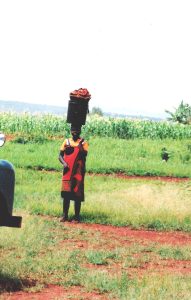 In early February 2016 our palliative care volunteer, Sammy, arrived with a man who he thought needed care. Sammy had gone to his shamba(farm) in a rural part of another District about 40km from town. There he met Njiku (not his real name) who was complaining of severe pain in his left chest and shoulder, and he was unable to sleep due to the pain. He also had a mass and large wound on his left chest.
In early February 2016 our palliative care volunteer, Sammy, arrived with a man who he thought needed care. Sammy had gone to his shamba(farm) in a rural part of another District about 40km from town. There he met Njiku (not his real name) who was complaining of severe pain in his left chest and shoulder, and he was unable to sleep due to the pain. He also had a mass and large wound on his left chest.
When we asked him about his health, he told us that he had had an amputation of the end of his index finger in 2011. No pathology tests were carried out. He was well until February 2015 when he noticed a large lump in his left armpit. He went to another hospital and the swelling was biopsied and showed metastatic malignant melanoma, a type of skin cancer which had resulted from the problem in his little finger in 2011. There was no possibility of him going to the cancer hospital in Dar es Salaam. So, we needed to treat his severe pain and the large ulcer or sore he had on his chest. We got oral morphine and gave it to him, and he experienced great relief after 15 minutes. Njiku was married with five children, and he had a small farm, but wasn’t able to work on it due to his pain.
Usually, our patients come from our own municipal area, but, on occasion, if a patient or a relative can come for the medications we agree to accept them into our Palliative Care Programme, especially if they have severe pain and need morphine. We started to treat Njiku’s pain following the “WHO 3-step Ladder” for pain control, but he needed morphine to get relief of his pain. Luckily, his relief of pain was so complete that he was even able to go to his shamba to work for a short time each day!
Njiku was able to come to MMM Faraja Centre to collect his morphine and our volunteer visited him at his home in the village and even accompanied him on the bus to town when he needed more medications. We continued to treat Njiku from a distance and phoned his neighbour (as he himself didn’t have a phone) to assess his condition. On 21 May 2016 we received word that Njiku had died during the night. We were very happy that, although it wasn’t easy to treat him at a distance, we had greatly improved his quality of life and he felt cared for by our Palliative Care team.
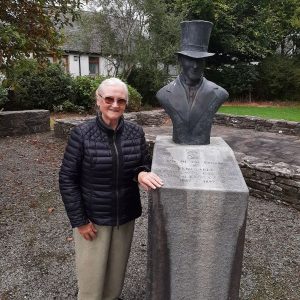 I have visited our national Marian shrine in Knock Co. Mayo, Ireland, quite regularly ever since I was a very small child living in Boyle Co. Roscommon. I thought I had seen every part of this beautiful place and had “met” all those associated with it: Our Lady of Knock, St. Joseph, St. John the Evangelist, and the Lamb of God. More recently I had started to visit the graveyard where many of the witnesses who died in or around Knock are now buried in marked graves.
I have visited our national Marian shrine in Knock Co. Mayo, Ireland, quite regularly ever since I was a very small child living in Boyle Co. Roscommon. I thought I had seen every part of this beautiful place and had “met” all those associated with it: Our Lady of Knock, St. Joseph, St. John the Evangelist, and the Lamb of God. More recently I had started to visit the graveyard where many of the witnesses who died in or around Knock are now buried in marked graves.by Sr. Sheila Campbell MMM Ireland 20.10.2023
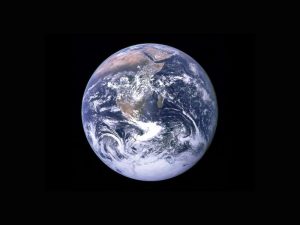 Did you know that Earth and Heart are the same word with the letters mixed up a different way? I discovered this fact the other day when I was playing a word game and I thought,” How appropriate!” Isn’t it right that heart is at the centre of the issue when we come to the care of our common home and address the issues that will affect us all around climate. We need the scientific knowledge to be able to measure, know the appropriate actions to take, but if we do not put our heart into it, the head knowledge alone will bring us nowhere.
Did you know that Earth and Heart are the same word with the letters mixed up a different way? I discovered this fact the other day when I was playing a word game and I thought,” How appropriate!” Isn’t it right that heart is at the centre of the issue when we come to the care of our common home and address the issues that will affect us all around climate. We need the scientific knowledge to be able to measure, know the appropriate actions to take, but if we do not put our heart into it, the head knowledge alone will bring us nowhere.
Personally, I am not in favour of climate activists who disrupt public events and damage property, but I do understand their passion. Without that dogged, dedicated commitment to a cause, no change will happen. This is a lesson we often learn from young people who are dreaming a dream and not burdened with the ennui of mid-life. It is also a lesson we have learnt over and over again from the lives of the saints. Saint Frances stripped off his clothes to convince his family that he was going to embrace Lady Poverty, St. Therese of Liseaux went to Rome to plead with the Holy Father to be allowed to enter her contemplative community when she was only sixteen. Our own Founder, Mother Mary Martin certainly had a passionate commitment to the medical care of mothers and babies from her time in Nigeria as a lay missionary.
I suppose the question for me today is where do I put my heart? There is a tendency in a lot of us to drift along, potter through life in a familiar regime. But as missionaries we are constantly being called to look outwards, bringing hope and light to the dark areas of our world. Like today’s young people we must keep alive our passion for a better world. This means putting our heart into the earth’s cry for help.
Help me, God, to be passionate today!
by Sr. Prisca Ovat MMM Nigeria/Kenya 18.10.2023
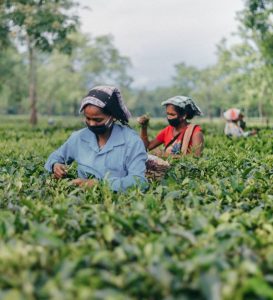 History has it that the first tea seeds were introduced by the expatriates over a century ago in Kiambu County, Kenya. From then on, 19 tea-growing counties emerged, due to the tropical volcanic red soils and evenly distributed rainfalls suitable for tea survival. As a matter of economy, tea is among the principal foreign exchange earners in Kenya, with both direct and indirect support to better living. But what do we know about the safety regulations, practice, and respect of human rights within the tea factories?
History has it that the first tea seeds were introduced by the expatriates over a century ago in Kiambu County, Kenya. From then on, 19 tea-growing counties emerged, due to the tropical volcanic red soils and evenly distributed rainfalls suitable for tea survival. As a matter of economy, tea is among the principal foreign exchange earners in Kenya, with both direct and indirect support to better living. But what do we know about the safety regulations, practice, and respect of human rights within the tea factories?
As a member of the African Faith and Justice Network, the working conditions of the employees at the Kenya tea factories was discussed as a matter of concern and urgency. The AFJN is a network of many religious and laypersons. One key question was asked: is tea really worth a woman’s dignity? We sought many ways to lend our voice in this unfortunate menace that strips a woman of her self-worth, amidst all other injustices meted on the female gender. This great exposé came to light in February 2023 a documentary made by the BBC Africa Eye which had remained under cover inside the tea factory with a hidden camera for 18 months and from then on, the subject gained global attention. In this documentary, it was unearthed that over seventy women had over the years been abused by their frontline managers, while others contracted varied forms of sexually transmitted diseases.
For some adventurous reasons, I found myself prying into life in the tea plantation. Life is as hard as could never had been imagined. Farmers are paid monthly. Some tribes are unjustly treated as managers are more inclined to looking favourably in the way of their own tribe’s people (a common inequality in the distribution of goods and employment peculiar to certain African countries). Additionally, the grounds men and women sweat it out in the rain and the sun, while the farm owners receive the payments on their behalf at Ksh 50 (USD 0.34) per kg leaving the workers with just 5 shillings (USD 0.034). Sometimes the money is held for as long as they desire before its final release to the workers and after several trips to the employers for their money which can mean several incidences of abuse.
However, in July this year, a Scottish court ruled that victims may proceed to sue the companies in question. Justice shall finally take its course, at least for the living. Topics as these are daily trending on social media and read over the news (sex for grades in institutions of learning, sex for jobs, even when they are rightly qualified for it). It is a difficult fashion to break away from because when evil is normalised in a culture, impunity begins to wear the face of innocence.
We each have the duty of care as educators, parents, religious leaders, and counsellors to sanitize our cultures. For we alone can redeem our society for us.
by Sr. Sheila Campbell, MMM Ireland 26.09.2023
 Nowadays we are used to jumping on a plane, off on a summer holiday. Business people fly all over the world, working as they travel. Despite our concerns nowadays about “carbon footprints”, air travel is still considered common and normal. But it was not always so!
Nowadays we are used to jumping on a plane, off on a summer holiday. Business people fly all over the world, working as they travel. Despite our concerns nowadays about “carbon footprints”, air travel is still considered common and normal. But it was not always so!
When Sr. Kevin McDonagh, one of our MMM pioneers set off with another Sister for her missionary work in Nigeria in 1949, flying was a different story. Could we cope with this nowadays?
The journey began in Dublin on Monday, June 6th. The airport was called Collinstown in those days. Mother Mary was standing outside on the tarmac, and they were able to wave to her as they took off. They had a short stop in London and then were Africa-bound.
“Off we sailed again through the clouds, and after a while we noticed what looked like a little mist under the wing. ‘Condensation’, I thought (very cleverly) to myself. But still, it did not dry off when we left the clouds behind us. At about 7pm the Captain came along to tell us the plane had an oil leakage and that we would have to land in Marseilles. We landed at 8.30pm… Customs again, more forms to be filled up and passports to be examined. A shower of mosquitos came along, hungry for Irish blood.”
The next day, Tuesday, the same plane flew them over Sardinia, then Tunis, and landed at Tripoli. At the former RAF base at Castel Benito, a hostess informed them that they would be leaving ‘at twenty-three of the clock’. This gave them an opportunity to go outside and take their first walk under an African moon. That night, Sr. Kevin managed to sleep as they flew southwards over the Sahara Desert to reach Kano, in northern Nigeria. This was early on Wednesday morning. The plane stopped for breakfast and refuelling and eventually arrived in Lagos – to find that their plane for Port Harcourt had already taken off. Nothing would be available until the following Tuesday morning!
After enjoying the hospitality of the Daughters of Charity for almost a week, they turned up at the airport the following Tuesday, but on the same day a tornado also arrived! The heavy rain continued all day Wednesday. But nevertheless, the plane took off.
“Next thing we were told was that there was something wrong with the oil gauge. Instead of landing in Port Harcourt, we ended up in Enugu.” The Holy Rosary Sisters came to the rescue this time, and they stayed overnight with them. On the Thursday, this was the 15th, they travelled by road to Abakaliki, and it was still raining. She finally reached her destination in Anua at the end of June, her first mission assignment of many.
What a journey! I wonder how long it would take by boat?
by Sr. Margaret Garnett MMM (1920 – 1990) England 14.10.2023
First published in 1989. Sr Margaret, a medical doctor, spent all her missionary life in Tanzania.
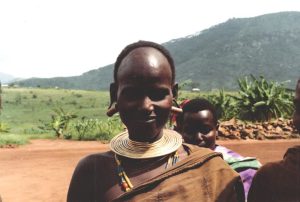 The Barabaig are a nomadic and pastoral people who live in Tanzania and have many difficulties as more and more land becomes cultivated and there is less pastureland for their herds and flocks.
The Barabaig are a nomadic and pastoral people who live in Tanzania and have many difficulties as more and more land becomes cultivated and there is less pastureland for their herds and flocks.
When I think about the women of the Barabaig tribe I am reminded of the Ideal Wife described in the Book of Provers; even though their environment and culture are very different from those women of Israel. Yet, the words of Proverbs can be applied to her.
The Barabaig woman has neither wool not flax, but she makes her clothes from the hides of goats and decorates them beautifully with beads, using her ‘skilled hands’.
She ‘secures her provisions from afar’. It may take her as much as an hour every morning and every evening to draw water for the needs of her household. It takes the whole day to gather enough firewood for the week’s cooking. Her menfolk travel far with their donkeys to buy maize. ‘She is girt about with strength and sturdy are her arms’ as she grinds the maize between two stones to prepare the family food. ‘She rises while it is still night’ to milk the cows before her sons and daughters take them out to pasture. ‘She is clothed with strength and dignity and laughs at the days to come.’
When expecting a baby, she attends the antenatal clinic at the first sign of pregnancy, for she understands how easy it is to lose a baby in the early months of pregnancy if she gets malaria or if she becomes anaemic. She them becomes a regular attender and, if she knows the Swahili language, she will interpret for her less knowledgeable friends. There are no secrets between the women. They discuss each other’s problems and try to find solutions. ‘She opens her heart in wisdom and on her tongue is kindly counsel.’
When the baby is born custom dictates that she spends a month in the house without going out, but she will break this custom in order to bring her baby to the clinic as soon as possible so that he or she may receive BCG vaccination to prevent tuberculosis. The only time in her life when she may carry a stick is after delivery. If the baby is a boy, she also carries an arrow.
She will bring her each month to the clinic for weighing and vaccination and she will also bring her relatives’ and neighbours’ children if for any reason, their own mother cannot come. Thus, does she ‘extend her arms to the needy.’ As in the world in general, so the Barabaig world is a man’s world. But if the older women, as a group, officially make a decision, the men have to obey!
To such women we can say, ‘Give her a reward of her labours and let her works praise her.’
by Sr. Aideen O’Sullivan MMM Scotland 12.10.2023
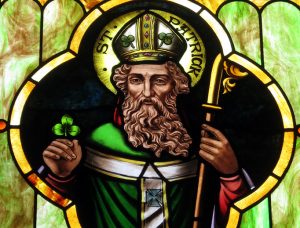 Once upon a time there was a world of super-human beings, heroes and heroines, who did marvellous things. They stood head and shoulders above ordinary people. Everything went right for them, and everybody praised them for their achievements.
Once upon a time there was a world of super-human beings, heroes and heroines, who did marvellous things. They stood head and shoulders above ordinary people. Everything went right for them, and everybody praised them for their achievements.
When we were younger, we imagined that, like those super-humans, we would achieve fame and fortune also. We would be magically delivered from the struggle and the need to work for success and popularity.
The bubble burst and we found ourselves in the real world just like everyone else, ordinary, and rather imperfect unfinished persons. Then it became all too easy to fall into the trap of cynicism: to join the ‘knockers’ and the ‘begrudgers’, the ‘I told you so’ clubs of this world.
But cheer up! God is not finished with us yet! We need to remember those who have committed themselves to an ideal that changed them and the world around them. These people remind us that our ordinariness and weakness can be transformed by grace and generous surrender to God.
St. Patrick is such a hero for many. We need people like him to inspire us today. That he came back of his own free will to Ireland where he had been enslaved for six years was a bit crazy, to say the least! But Patrick was convinced that this was God’s call to him.
Looking more closely at the story of Patrick’s conversion, one sees that it was deep and radical. His subsequent life bore this out. Instead of becoming bitter and angry at the cards life had dealt him, he channelled his feelings in prayer to God. In his zest for life, he put his energies into helping others by preaching the Good News of the Gospel. That is why he is remembered today as one of the great missionaries in the history of the Church.
We are all called to share the Good News. There is hope in God’s word, and it is up to us to spread this hope around. We need to reclaim lost confidence in ourselves, by taking on board the bold joy of the Gospel. God loves us all, no matter who we are, what we are, how we are, or what we have done. We can allow our imaginations to be stirred by this real hero for today’s world and take to heart his words.
by Nadia Ramoutar MMM Communications Coordinator Ireland 10.10.2023
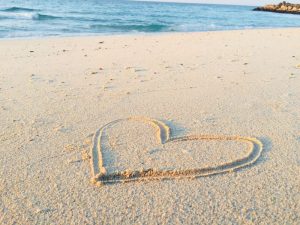 Recently, I met with an MMM Sister and she asked me “How is your heart?”
Recently, I met with an MMM Sister and she asked me “How is your heart?”
I stopped for a moment and automatically put my hand over my heart and paused before I answered. It was such an interesting question and unexpected. I had to actually do an inventory of my body and come up with an honest answer.
In our busy lives with long to do lists we often worry about getting things done on time and finding ways to do more with less, we put a lot of emphasis on our minds, but checking in with our heart really requires us to pause and reflect. How is our heart is a very important question that warrants attending.
The MMM Sisters have a lovely practice of going on retreat and pausing from the busy parts of life. They also make prayer part of their daily practice. Many times the mission work is hard as it involves some of the poorest of the poor people and the horrendous circumstances they have to overcome.
Caring for our hearts helps to overcome the challenges of seeing the mistakes and challenges humans often make for one another. The human world is burdened with poverty, illness, hunger, violence and other difficulties. It can be frustrating to try and make life better for people when the trends of famine, drought and war seem to be on the rise.
It can be discouraging, which can be translated from the Old French to mean “dishearten” or “to move away from the heart.” Mission work takes tremendous courage to face obstacles and to overcome what can feel disheartening.
The work to make the world a safe and better place for women and children requires tremendous effort and working with several elements of society that are not easy to navigate. We find that mission work often helps those who governments and societies are overlooking and forgetting. We find that our mission work sees what others seem to overlook. It is not easy to keep looking at suffering but there is no other way to ease it.
Time and time again in the Bible we see examples of God comforting those who would be disheartened. We are reminded that in the face of a giant fear, we can be courageous because we are not alone. At the moment, many people in our world struggle with being lonely. Loneliness is at the cause of many ills for people fearful and alone.
In gently nurturing our hearts and slowing down to take time to reflect and retreat from the noise of the world, we may find the comfort and courage we seek. So now, at the start of every day, I quietly ask myself “How is my heart today?”
by an unknown author Ireland 08.10.2023
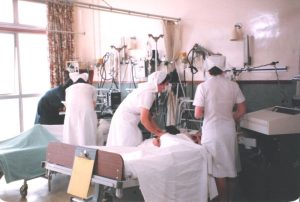 (First published by MMM in 1961)
(First published by MMM in 1961)
A short time ago I was admitted to hospital for an operation. Was I worried? For at least a week previous I sought the prayers of many dear friends.
The dreaded day came. On arrival at the hospital, I was received with such kindness that I can truthfully say all fear left me. I was completely relaxed. The usual pre-operative examinations: “say 99” and “take a deep breath” and so forth were carried out calmly and quietly. There were encouraging words from the Sisters: “You won’t mind it at all, I assure you.” Finally, a dear Indian Sister came in to “settle me down” for the night. Having made sure I was comfortable, she gave me a bright coloured capsule saying: “This will give you a good night’s sleep, dear.” It sure did. At 7.30 the next morning I was gently awakened but still beautifully drowsy. The final touches for the general anaesthetic and operation were not what I expected. I might have been going to the Royal Circle in my newly acquired theatre cap.
Yes, I began to realise that I was going somewhere. Then a pretty, young nurse was at my bedside and said quietly: “I have an injection for you. And then you will be off in a few minutes.” “OFF?”, this struck a chord so clearly, I shall never forget it. OFF where? The injection over, I was OFF, or if you prefer “out for the count.”
There was a faint recollection of being lifted on to the theatre table (how I got there was a mystery – I know I could not have walked). Someone took my hand at one side; at the other side, I guessed it was the anaesthetist who sad gently: “that is a beautiful vein.” I felt nothing except the reassuring touch of her hand.
Then for a split second I heard running taps – that was the doctor who said: “you will be all right.” The eyelids were too heavy to lift, but I was sure it was he, in whose hands, after the Lord’s, I had put myself with such confidence.
“It’s all over. You are back in bed,” the little Sister bending over me said. “No?” was my emphatic reply. Then in the twinkling of an eye, I saw her. Yes, it was over, and I felt so happy. “Thank God, “I said and I meant it from the bottom of my heart. When I came to life afterwards (there was an afterwards) and there was no sickness as in the old days – just another injection for another wonderful night’s sleep.
Each day there was an improvement. There were the doctor’s visits, eagerly awaited to confirm the success of his and the staff’s work. God bless them. There were further injections and stitches to be removed, of course. But these are almost painless nowadays and nothing to worry about.
By Sr. Sheila Campbell MMM Ireland 06.10.2023
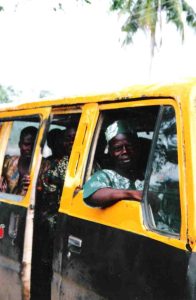 The other day I was leafing through some old MMM Magazines, and I came across the following story. The author was not recorded, but it sounds like a newly arrived missionary in Nigeria. The story is over sixty years old, but I am betting that the same customs are as active in Nigeria as they were then. I was remembering my own experience in Brazil were some of the long distant buses and lorries had a similar custom. I hope you enjoy it today.
The other day I was leafing through some old MMM Magazines, and I came across the following story. The author was not recorded, but it sounds like a newly arrived missionary in Nigeria. The story is over sixty years old, but I am betting that the same customs are as active in Nigeria as they were then. I was remembering my own experience in Brazil were some of the long distant buses and lorries had a similar custom. I hope you enjoy it today.
“History was being made in Nigeria. It was my first time going to the bush, but that indeed was not the historic occasion. It was Election Day, and the roads were crammed full with the traffic of the crowds going to the voting centre. Women were voting too – an unheard-of thing in Nigeria – hence even greater stir than usual.
One lorry, the normal local transport, was stopped by the side of the road, boldly displaying the caption: “Take it easy, Joe”. The occupants were certainly practising it, for they were still there, chatting gaily, on our return journey. This fashion of having a slogan or motto on the front of all native buses and lorries fascinates the newcomer to Nigeria. Some of the mottos are quite amusing, like “Slow and Steady”, “Hope Rising”, while “Why Worry” and “Take Life Coolly” seem to be direct advice to the newcomer who feels she will never be able to cope with her new and multiple duties.
Other titles like “Union with God”, “Show Thy Light, O Lord” and “One with God” indicate the deep spirituality of the people. Sometimes I wonder if they realise the depth of such profound mottoes, or if they advert to them at all.
If it were to my lot to travel by native transport, I think I would pass over all their mottoes, both amusing and profound, and travel by the safe and sound advice of “Take it Easy, Joe!”.”
